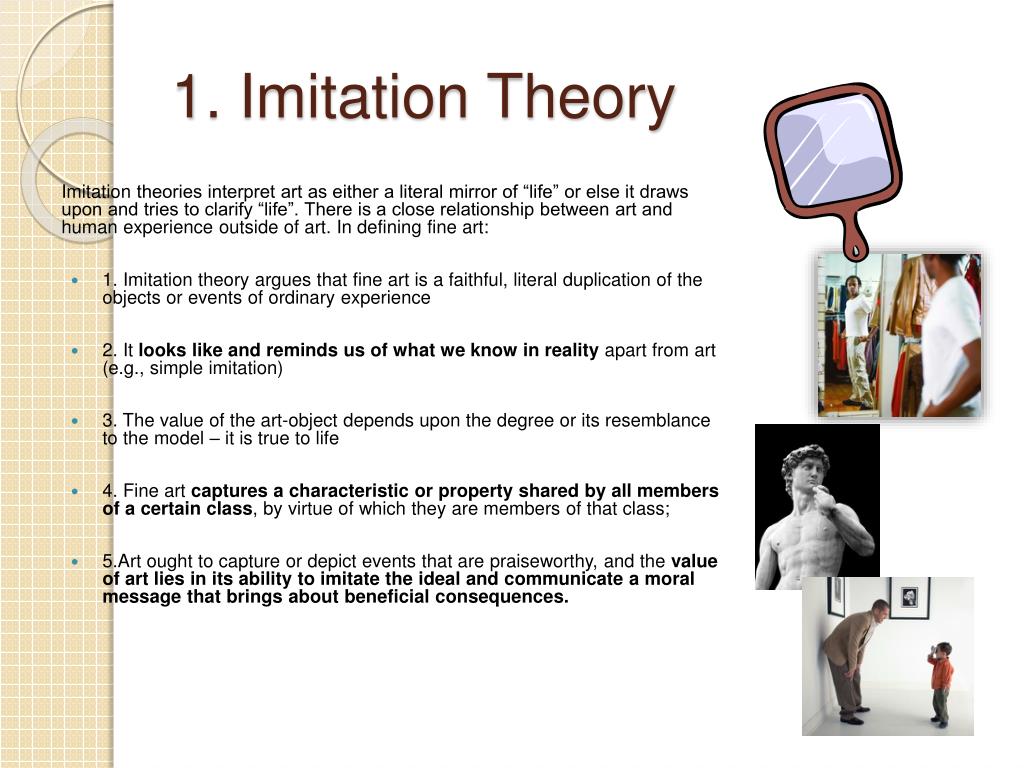Theory Of Art

Theory Of Art Therapy
Expressive theories: art viewed as a representation or manifestation of the inner state of the artist Formalist theories: the work of art viewed as an organic unity; i.e., a self-contained, self-justifying entity Processional theories: the making of works of art because the creative process is an inherently self-contained, self-justifying process. Plato had two theories of art. One may be found in his dialogue The Republic, and seems to be the theory that Plato himself believed. According to this theory, since art imitates physical things, which in turn imitate the Forms, art is always a copy of a copy, and leads us even further from truth and toward illusion.


Each of these stages refers to a combination of visual characteristics found in the art work of children. “Developmental-Stage” theory assumes that the stages occur in a sequential order. Little attempt has been made to relate these stages of growth in art directly to chronological age because so many factors contribute to the child’s development in art. Many individuals never continue beyond the schematic or transitional mode of representation in the graphic arts. Just as children don’t grow physically and at the same time as their peers, the same can be said for their creative and mental growth. It happens at different rates, which is normal.
1. The Scribble Stage
The first stage occurs when the child manipulates a drawing tool and makes random marks, dots, and lines on the drawing surface. He will scribble and manipulate the drawing tool with little or no concern for the appearance of the marks he makes. There are three discernible stages during this stage:
- random scribbling
- controlled scribbling
- naming of scribbling
By definition, a child in the scribbling stage, usually 2 - 4 years of age, is not drawing symbols for objects. Children like to scribble because it gives them a chance to move their arms around freely. The act of scribbling is purely kinesthetic and imaginative. Don’t waste money on coloring books, they can actually inhibit children’s creativity. They are much better off with a large sheet of paper and a fat, dark crayon.

2. The Pre-Schematic Stage
The second, or pre-schematic stage, is entered when the child produces his first representative symbols for objects in his environment. These symbols are formed with circles, squares, and lines. The symbols change frequently. The pictures have a “floating organization and the paper may be turned many times while drawing. Later, the symbols may be organized horizontally. The pre-schematic stage refers to that stage when the child is drawing his first symbols, but has not yet developed “schema”. Generally from 3 to 7 years of age.
3. The Schematic Stage
The main characteristics of this stage are the repetition of symbols for familiar objects, and the use of the base-line. The term “schema” refers to the habitually repeated symbol for an object. Examples of such schema are the lollipop tree, the stiff scarecrow-type drawings of people, or a series of houses which are all drawn the same. The figures appear flat and stiff, and are changed only when there is strong motivation to do so. Later, multiple base-lines are the major organizational devices used by the child in this stage. X-ray or transparent views, top views, side views, or raised base-lines are used in increasing frequency as the subject depicted demands variation from the single base-line. The pictures become more complex; yet they still use schema. Single base-lines, multiple base-lines, and fold-up views are used. The fused or continuous contour line is also used to further define figures. In general, children reach this stage between 6 and 11 years of age. Without further instruction and practice a few children will reach a plateau during the latter part of this stage.
3. The Transitional Stage
This is the stage in which the maturing child, usually 9 years or older, attempts to produce art work that meets adult standards; yet he still produces works which unintentionally contain many characteristics of the schematic stage. For instance, a picture may include a natural looking ground plane with trees of diminishing size going off into the distance. However, the child may include the top view of a swimming pool and place several stiff figures on the edge of the paper. The art work has visual contradictions. The base-line is replaced by a receding ground plane, and there is frequent use of intentional overlapping. Much attention is given to details, sex roles, and clothing differences. Some linear perspective may be used during this stage. A few children who enter this stage will reach a plateau and not enter the stage of realism.
Theory Of Arts And Sciences Hicksville
5. The Realism Stage
The stage of realism is entered when the child is producing art work in the manner of adult artists. In general, the child is 12 or older. Considerable control over the medium, content, and organization is evident. The figures become natural in appearance, or are intentionally stylized. The consistent use of many organizational devices is also quite evident in the art work produced during this stage, such as overlapping, diminishing size, placement on the picture plane, and linear and aerial perspective. It is at this stage that the child becomes most critical and self conscious about their ability to produce realistic artwork.
